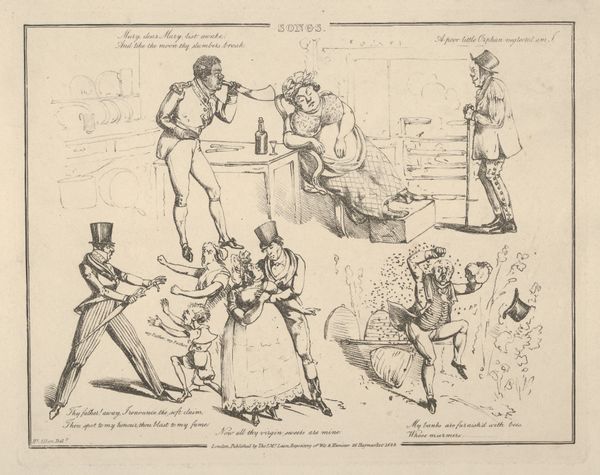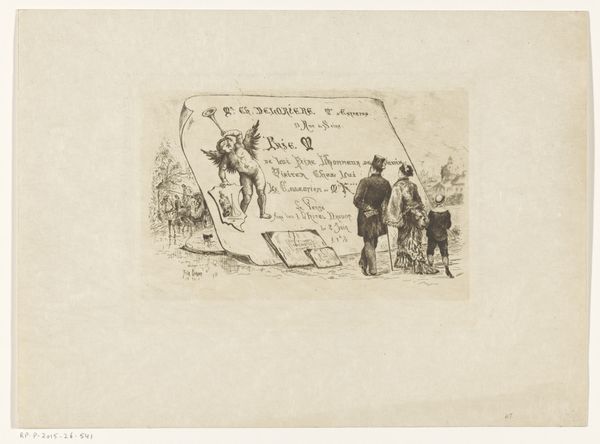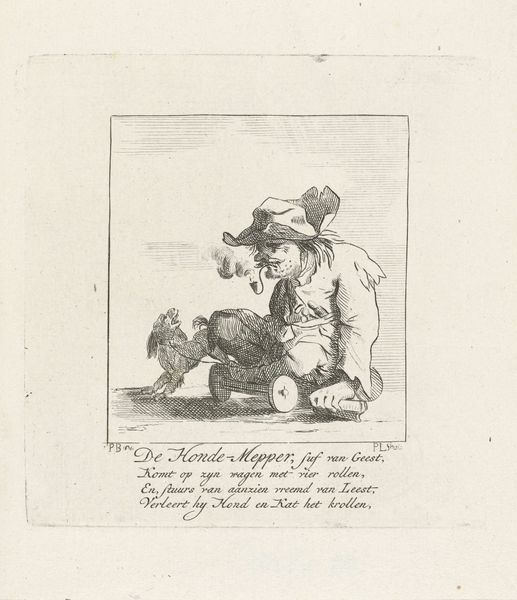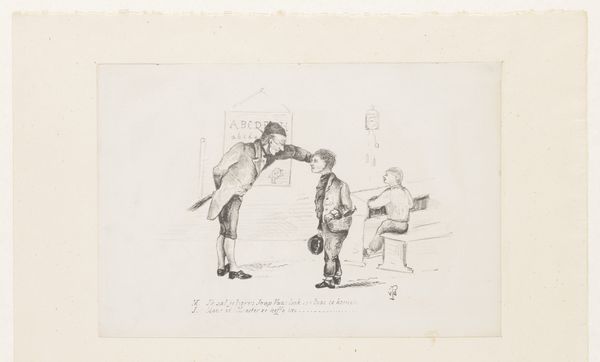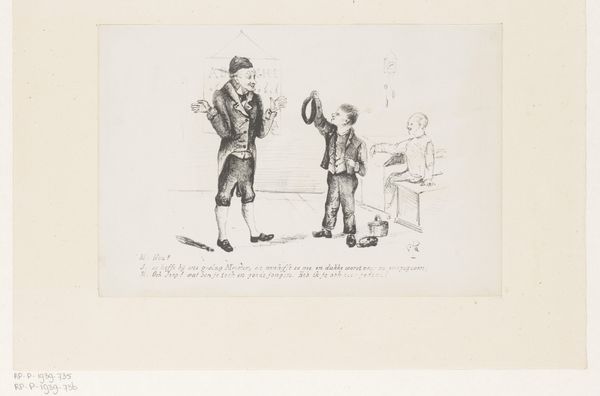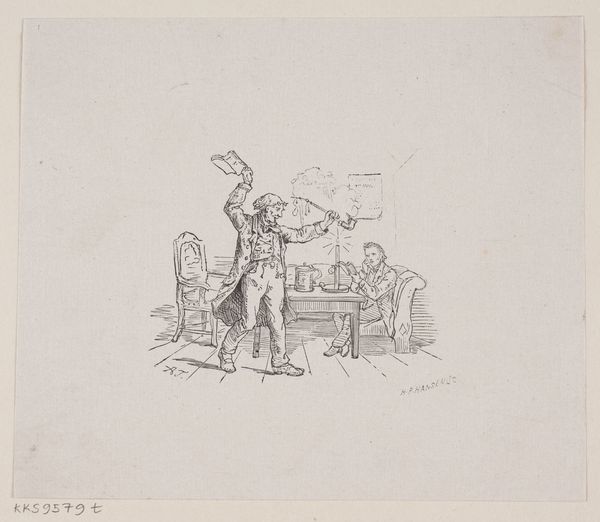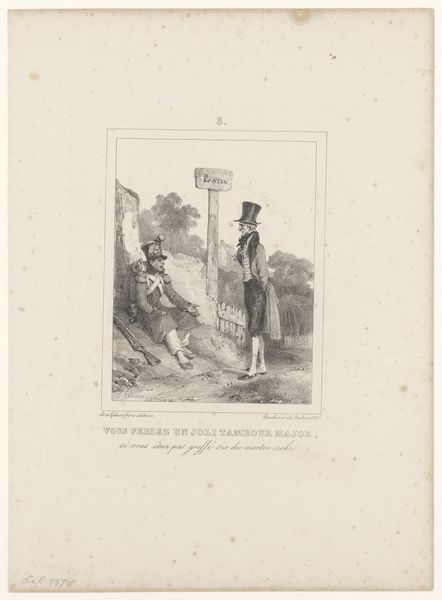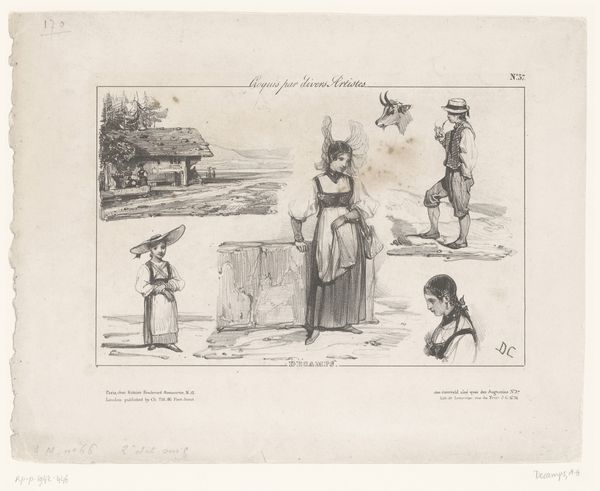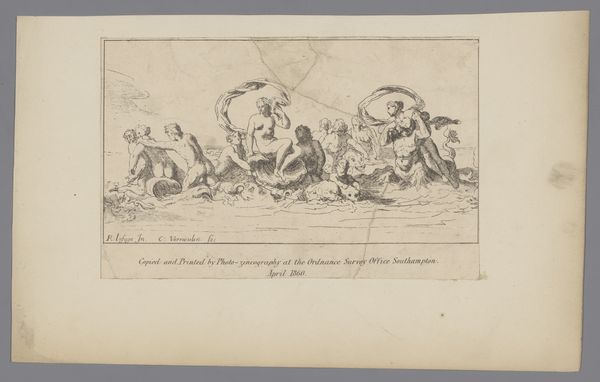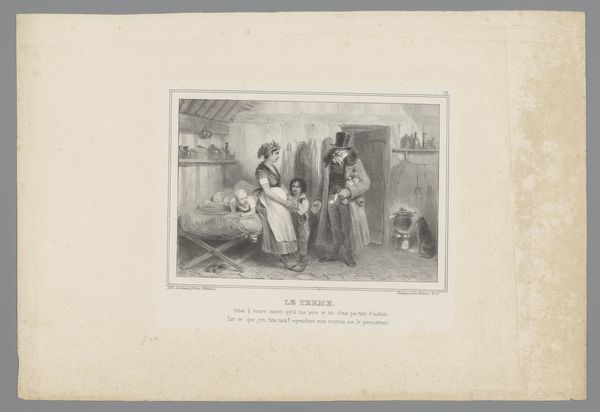
Spotprent op de verkiezingen voor de Staten-Generaal in augustus 1880 te Amsterdam 1880 - 1888
0:00
0:00
drawing, lithograph, print, ink
#
drawing
#
dutch-golden-age
#
lithograph
# print
#
caricature
#
ink
Dimensions: height 196 mm, width 363 mm
Copyright: Rijks Museum: Open Domain
Curator: This lithograph by Piet Hein Testas, titled "Spotprent op de verkiezingen voor de Staten-Generaal in augustus 1880 te Amsterdam," presents a satirical view of the elections. Created sometime between 1880 and 1888, it uses ink to capture the political climate of the time. Editor: Immediately, the composition strikes me as divided. On the left, a chaotic domestic scene, on the right, a more sedate, almost judgmental figure. The stark contrasts in tone are certainly intriguing. Curator: Indeed, the piece reflects the social turmoil of the era. The lithographic process itself allows for the mass production of political commentary, engaging a wider audience and fueling public discourse. Notice the contrast between the woman holding a spoon and the political text behind her, offering insights on the traditional image of motherhood subverted by political engagement. Editor: Looking closer, I’m drawn to the lines, scratchy and uneven, particularly in the chaotic scene on the left. The artist masterfully uses line weight to denote depth and focus our attention. Notice how this formal tension communicates anxiety and restlessness. The satirical targets are well defined; even without knowing the specifics, one gets a sense of power structures and their challengers. Curator: Considering the production, prints such as this would have been disseminated widely, cheaply printed on newsprint. These weren't precious objects for the elite; they were meant to be consumed, discussed, and potentially discarded after their immediate political relevance waned. Think about the conversations sparked in cafes and workplaces! Editor: True, the deliberate use of caricature, specifically the exaggerated facial features and bodily distortions, adds to the satirical tone and also plays with our eye. Each caricature directs and affects our overall perception. It creates a heightened emotional connection between artwork and observer. The semiotics employed within such exaggeration makes Testas' message explicit. Curator: It truly opens a window into how political ideas and figures were debated and represented within everyday visual culture of late 19th century Netherlands. Editor: It does, it showcases how skillfully simple lines can dissect societal woes.
Comments
No comments
Be the first to comment and join the conversation on the ultimate creative platform.
